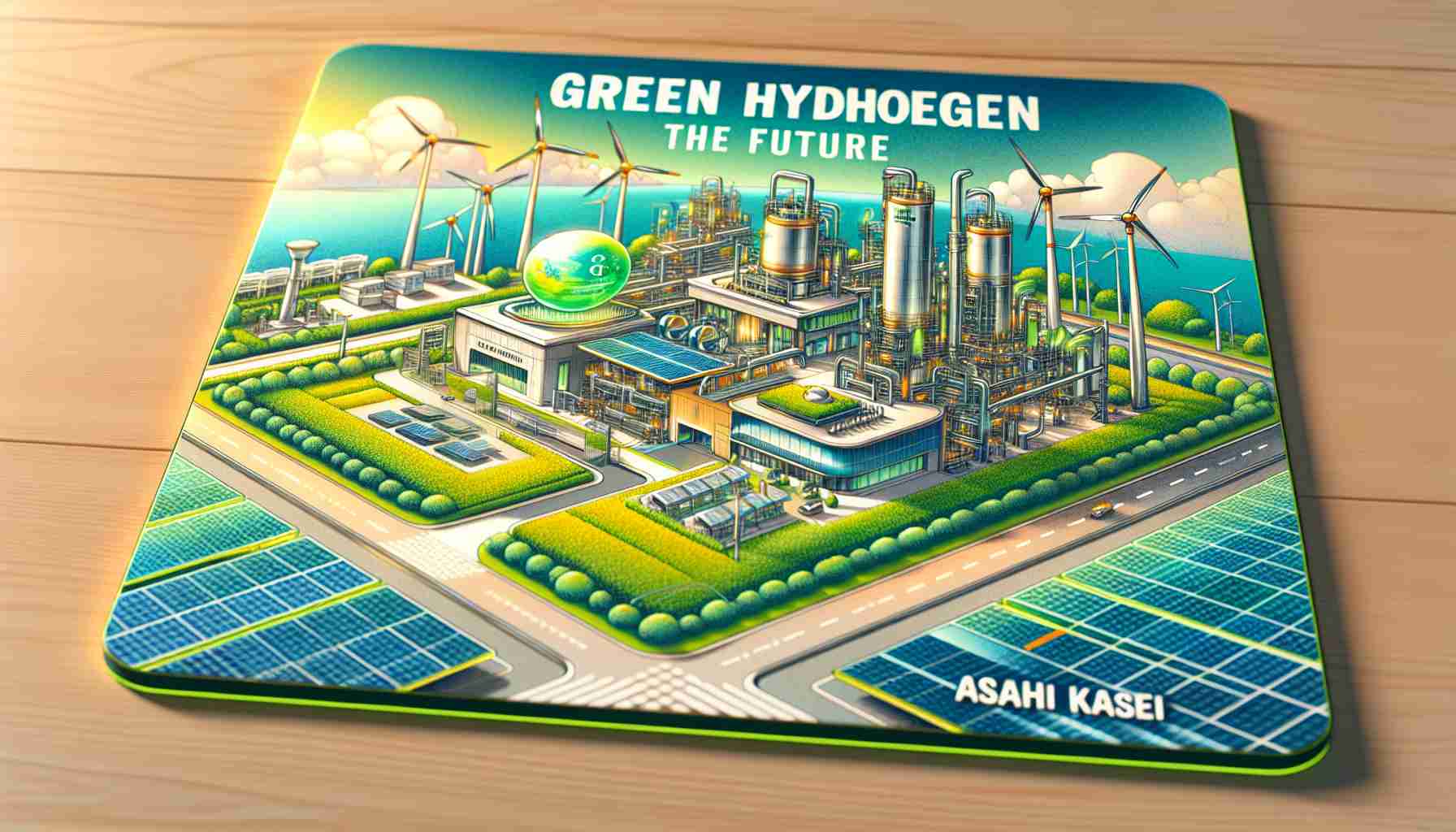Backed by Government Support
In a significant advancement for the renewable energy sector, Asahi Kasei (AHKSY) has announced its plans to enhance the manufacturing capabilities of green hydrogen production equipment in Kawasaki, Japan. This expansion includes the construction of new facilities dedicated to cell frames and membranes, each with a remarkable 2 GW production capacity by the year 2028.
The total financial commitment for this initiative is projected to reach ¥35 billion, complemented by anticipated government subsidies amounting to ¥11.4 billion. When combined with its existing production capabilities, this development is set to elevate Asahi Kasei’s total annual output for these components to over 3 GW.
This venture is a crucial part of Japan’s ambitious Green Transformation strategy, designed to achieve carbon neutrality by 2050. To further its objectives, Asahi Kasei is aiming to secure a 20% market share in the global market for water electrolysis equipment by 2030, focusing on key regions including Europe, North America, and India.
With this strategic expansion, Asahi Kasei positions itself at the forefront of the green hydrogen revolution and underscores its commitment to sustainable energy solutions amidst the global push for decarbonization.
Asahi Kasei’s Green Hydrogen Initiative: A Leap Towards Sustainability
Asahi Kasei (AHKSY) is making significant strides in the renewable energy industry with its recent announcement to expand its manufacturing capabilities for green hydrogen production equipment in Kawasaki, Japan. This development underscores the company’s commitment to contributing to sustainable energy solutions in line with global decarbonization efforts.
Key Features of the Investment
The company’s initiative involves constructing new facilities that will focus on producing cell frames and membranes specifically for hydrogen production, each boasting a notable capacity of 2 GW by 2028. This strategic expansion will elevate Asahi Kasei’s total capacity for annual output to over 3 GW, integrating its existing production capabilities into this ambitious project.
Financial Commitments and Government Support
The total investment for this expansion is projected to reach ¥35 billion (approximately $320 million USD), bolstered by government subsidies amounting to ¥11.4 billion. This support highlights the Japanese government’s dedication to enhancing the country’s renewable energy infrastructure as part of its Green Transformation strategy, targeting carbon neutrality by 2050.
Market Goals and Strategic Focus
Asahi Kasei has set a bold target to capture 20% of the global market for water electrolysis equipment by 2030. To achieve this, the company will focus on expanding its presence in key markets such as Europe, North America, and India, where demand for sustainable energy solutions is rapidly growing.
Pros and Cons of Asahi Kasei’s Green Hydrogen Initiative
Pros:
– Government Support: The substantial financial backing from the government enhances the project’s feasibility and effectiveness.
– Sustainable Growth: Focus on green hydrogen aligns with global trends towards decarbonization and sustainable energy.
– Market Leadership: Aiming for a significant market share positions Asahi Kasei as a leader in the emerging hydrogen economy.
Cons:
– Capital Intensive: The high initial investment might pose financial risks if market conditions change or if anticipated demand does not materialize.
– Technical Challenges: Developing effective and efficient technology for hydrogen production can be complex and may face unexpected hurdles.
Use Cases for Asahi Kasei’s Green Hydrogen Products
The components produced by Asahi Kasei will be instrumental in various applications, including:
– Industrial Manufacturing: Green hydrogen can be used as a clean energy source in large-scale manufacturing processes.
– Transportation: Hydrogen fuel cells represent a sustainable alternative for vehicles, contributing to lower emissions.
– Energy Storage: Hydrogen production provides a means of storing excess renewable energy, addressing supply-demand imbalances.
Trends in Renewable Energy and Future Predictions
As the global emphasis on clean energy continues to rise, investments in hydrogen technologies are expected to grow significantly. Analysts predict a compound annual growth rate (CAGR) of over 30% in the hydrogen sector over the next decade, underpinned by advancements in production technology and increasing government initiatives worldwide.
Conclusion
Asahi Kasei’s expansion in green hydrogen production reflects a broader shift towards renewable energy solutions, ensuring they remain competitive in a rapidly evolving market. By strategically positioning itself for growth while leveraging government support, Asahi Kasei is playing a crucial role in paving the way for a sustainable energy future.
For further updates on renewable energy and related investments, visit Asahi Kasei.

